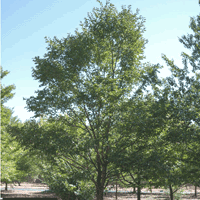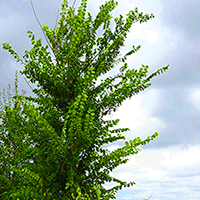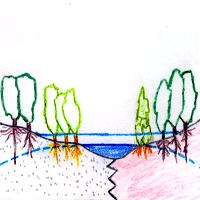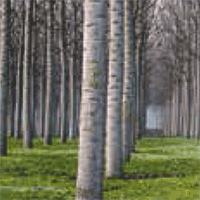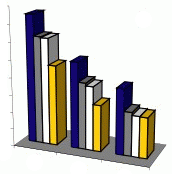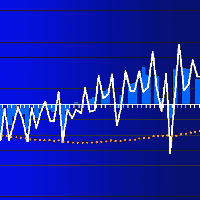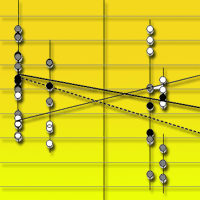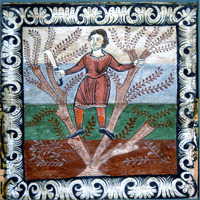
The elm, tree of milk and wine
iForest - Biogeosciences and Forestry, Volume 8, Issue 2, Pages 181-186 (2015)
doi: https://doi.org/10.3832/ifor1244-007
Published: Aug 13, 2014 - Copyright © 2015 SISEF
Commentaries & Perspectives
Collection/Special Issue: 3rd International Elm Conference, Florence (Italy - 2013)
The elms after 100 years of Dutch Elm disease
Guest Editors: A. Santini, L. Ghelardini, E. Collin, A. Solla, J. Brunet, M. Faccoli, A. Scala, S. De Vries, J. Buiteveld
Abstract
Elm has played an important role in European culture for thousands of years, in many roles, with regional variation. In material culture, its wood has assisted in hunting and warfare for over seven thousand years; but more importantly, its leaves and bark were semi-indispensible for the production of milk and meat, and served as an emergency food for humans. In the Mediterranean, elm was the main tool for the production of a good quality wine by providing support for the grapevine, and it helped feeding the cattle. These functions sometimes found an echo in the non-material culture. The fact that in Germanic genesis stories the first woman was created out of an elm (the man out of an ash), as well as a severe local taboo on the use of elm wood for skis, threatening the offender with a place in hell, seem both connected to the superior feeding value of this tree. In England and in parts of continental Europe most sacred trees were elms, sometimes performing female functions such as the production of babies. In the Mediterranean, however, the elm was seen as the male partner in the “marriage of the vine to the elm”, which was the celebrated system of viticulture. That image has been used by poets and politicians over the ages to praise the effects of human marriage, cooperation and interdependence. It even forms the core of the apocryphal Bible book “The Shepherd”, where it is seen as a symbol and example for a kind of symbiosis between the rich and the poor. - In conclusion, the ultimate origin of the English elm or “Atinia”, as well as its discovery is discussed, which appears to be a question of milk and wine.
Keywords
Ulmus, Viticulture, Fodder, Emergency Food, Non-material Culture, Cultivar “Atinia”, Cultivar “Arbia”
Authors’ Info
Authors’ address
Formerly at Dorschkamp Forest Research Station, Wageningen (The Netherlands)
Current address: Jonkerlaan 90-113, 2242 EX Wassenaar (The Netherlands)
Corresponding author
Paper Info
Citation
Heybroek HM (2015). The elm, tree of milk and wine. iForest 8: 181-186. - doi: 10.3832/ifor1244-007
Academic Editor
Alberto Santini
Paper history
Received: Jan 16, 2014
Accepted: Jul 17, 2014
First online: Aug 13, 2014
Publication Date: Apr 01, 2015
Publication Time: 0.90 months
Copyright Information
© SISEF - The Italian Society of Silviculture and Forest Ecology 2015
Open Access
This article is distributed under the terms of the Creative Commons Attribution-Non Commercial 4.0 International (https://creativecommons.org/licenses/by-nc/4.0/), which permits unrestricted use, distribution, and reproduction in any medium, provided you give appropriate credit to the original author(s) and the source, provide a link to the Creative Commons license, and indicate if changes were made.
Web Metrics
Breakdown by View Type
Article Usage
Total Article Views: 60397
(from publication date up to now)
Breakdown by View Type
HTML Page Views: 51156
Abstract Page Views: 2963
PDF Downloads: 4816
Citation/Reference Downloads: 44
XML Downloads: 1418
Web Metrics
Days since publication: 4139
Overall contacts: 60397
Avg. contacts per week: 102.15
Citation Metrics
Article Citations
Article citations are based on data periodically collected from the Clarivate Web of Science web site
(last update: Mar 2025)
(No citations were found up to date. Please come back later)
Publication Metrics
by Dimensions ©
Articles citing this article
List of the papers citing this article based on CrossRef Cited-by.
References
Futterlaubbäume und Speiselaubbäume [Fodder trees and edible foliage trees]. Berichte der Schweizerischen Botanischen Gesellschaft 46: 594-613. [in German]
Gscholar
Altnordisches etymologisches Wörterbuch [Old Norse etymological dictionary]. Brill, Leiden, The Netherlands. [in Gerrman]
Gscholar
Die apostolischen Väter [The Apostolic Fathers]. Der Hirt des Hermas. Mohr, Tübingen, Germany. [in German]
Gscholar
Zur Geschichte der Schneitel- und Laubfutterwirtschaft in der Schweiz [On the history of pollarding and foliage-fodder utilization in Switzerland]. Festschrift Zoller, Dissertationes Botanicae 196: 469-489. [in German]
Gscholar
Rebe und Ulme. Geschichte eines literarischen Bildes [Vine and elm. History of a literary image]. Schriften zur Weingeschichte nr. 28. Gesellschaft für Geschichte des Weines, Wiesbaden, Germany. [in German]
Gscholar
Iep of Olm, Karakterboom van de Lage Landen [Iep or Elm, a tree characteristic of the Low Countries]. KNNV Uitgeverij, Zeist, The Netherlands. [in Dutch]
Gscholar
Treslag og tabu i Norge [Wood and taboo in Norway]. H. Aschehoug & Co., Oslo, Norway. [in Norwegian]
Gscholar
Almetræer [Elm trees]. Tidsskrift for det praktiske Landbrug 1: 79-84. [in Danish/Norwegian]
Gscholar
Laubgeschichten. Gebrauchswissen einer alten Baumwirtschaft, Speise- und Futterlaubkultur [Foliage stories. Knowledge of an ancient tree economy, food and fodder culture]. Böhlau Verlag, Wien, Köln, Weimar, Austria, Germany. [in German]
Gscholar
Ethnobotanical studies on barkbread and the employment of wych elm under natural husbandry. Danmarks Geologiske Undersøgelse II, Række 80: 262-308.
Gscholar
Untersuchungen über den Futterwerth der Blätter, Triebe und schwächsten Zweige verschiedener Laub- und Nadelhölzer, sowie einiger andrer Waldgewächse [Studies on the nutritive value of leaves, shoots and weakest branches of various deciduous and coniferous trees, as well as of some other woodland species]. Tharandter forstliches Jahrbuch 43: 212-252. [in German]
Gscholar
Die Bedeutung und Einrichtung der Futterlaubwälder [The importance and establishment of leaf-fodder forests]. In: Proceedings of the “IIe Congrès International de Sylviculture”. Budapest (Hungary) 1936, vol. II, pp. 510-515. [in German]
Gscholar
Skav. Ein studie i eldre tids fôr-problem [Shavings. A study on the fodder problem in ancient time]. Universitetsforlaget, Oslo/ Bergen, Norway, pp. 1-387. [in Norwegian]
Gscholar
The chemistry and digestibility of fodder trees and shrubs. In: “The use and misuse of shrubs and trees as fodder”. Joint Publication no. 10, Imperial Agricultural Bureaux, Aberystwyth, UK, pp. 185-231.
Gscholar
The Elsevier Non Solus Imprint. Elsevier Science, Amsterdam, The Netherlands.
Gscholar
Venus. Etymologien um das Futterlaub [Venus. Etymologies around the leaf-fodder]. Ed. Böhlau, Köln/Graz, Germany/Austria. [in German]
Gscholar
Ivy, mistletoe and elm: Climatic indicators - fodder plants. Danmarks Geologiske Undersøgelse IV, 4: 1-32.
Gscholar
The composition and nutritive value of feeding stuffs. Bulletin 124, Ministry of Agriculture and Fisheries, London, UK.
Gscholar

